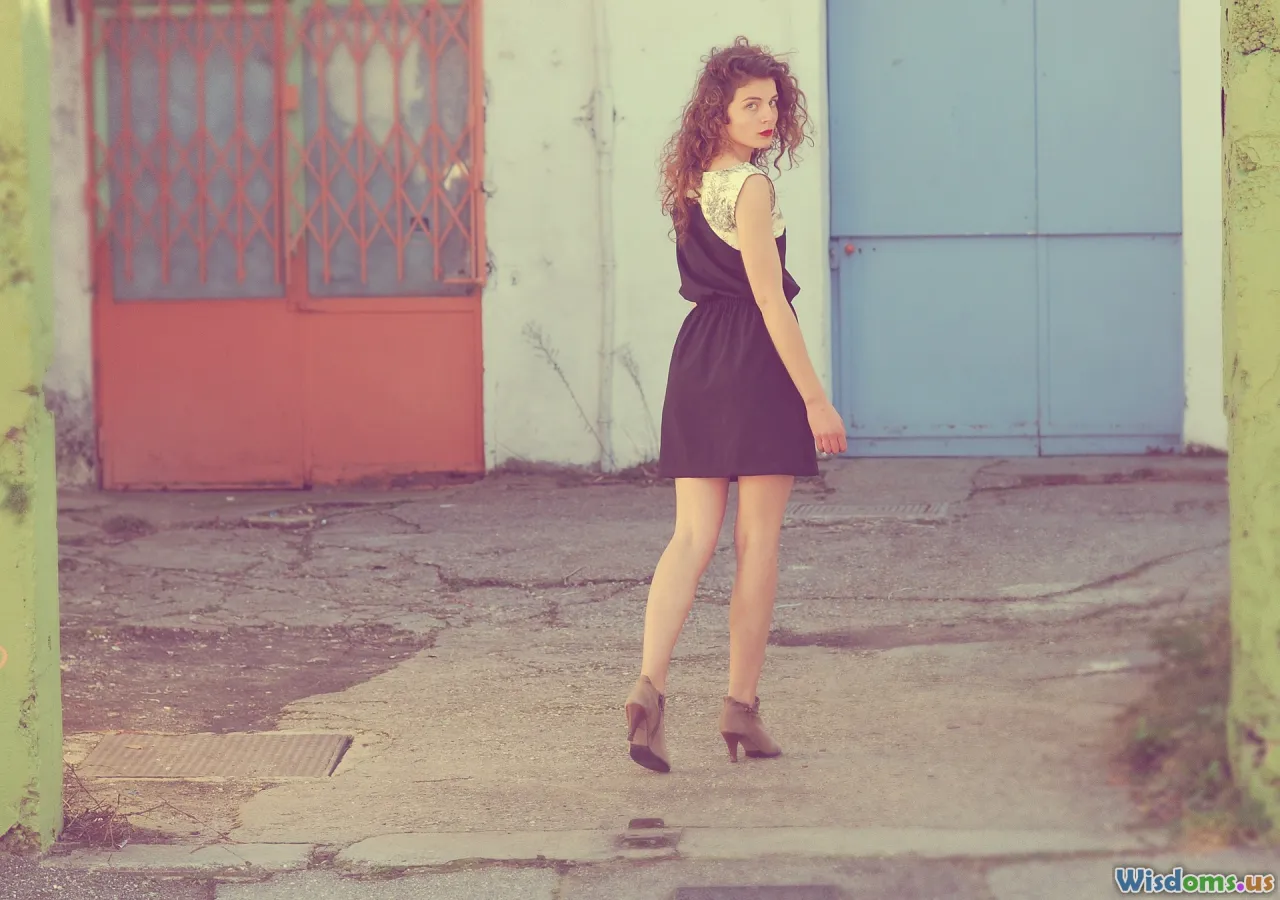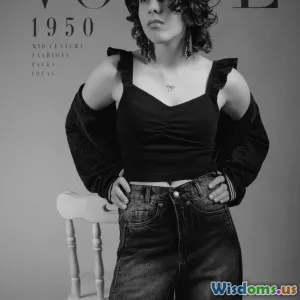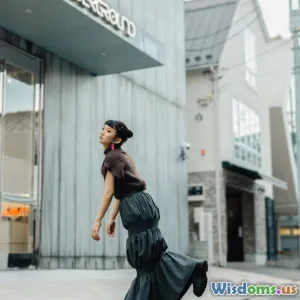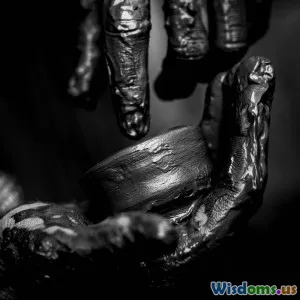
Why Monochrome Looks Dominate Street Style in 2024
8 min read Explore how monochrome street styles are shaping 2024 with bold minimalism, sustainability, and new aesthetics. (0 Reviews)
Why Monochrome Looks Dominate Street Style in 2024
Street style has always been a dynamic reflection of cultural shifts and individual expression. In 2024, one trend stands out prominently on urban streets around the globe: monochrome dressing. More than a mere color choice, the dominance of monochrome looks symbolizes a deep convergence of minimalism, sustainability, and innovative styling that is redefining how people approach fashion on the streets.
This article explores why monochrome looks have surged to prominence this year, shedding light on the psychological, aesthetic, and societal forces at play.
The Rise of Monochrome: A Visual Simplification in Complex Times
As the world contends with environmental challenges and a surplus of choices in lifestyle, fashion mirrors this complexity by turning to simplicity. Monochrome — dressing entirely in one color or varying shades of it — offers clarity and cohesion amid chaos.
Global street style scenes from New York to Seoul reveal how wearing a single color streamlines outfit decision-making while creating a visually striking statement. According to a 2023 survey conducted by Stylus Media, 67% of urban consumers aged 18–35 find monochrome outfits appealing due to their “effortless chic” and ability to be dressed up or down.
This trend challenges the previously dominant ‘maximalist’ aesthetic, where layering bold colors and patterns reigned supreme. Instead, monochrome embodies calm and calculated style, reflecting a collective desire for stability amid rapidly shifting social landscapes.
Psychological Impact: The Power of Color Monochromy
Color psychology provides further insight into why monochrome dressing captivates in 2024. Monochrome outfits intensify the expressive power of a single color. For example:
- Black: Often associated with sophistication and power, black monochrome exudes confidence and timeless elegance.
- White: Conveying purity and calm, white outfits suggest freshness and minimalism.
- Neutrals and Earth Tones: Browns, beiges, and olive greens promote groundedness and a connection to nature, aligning well with eco-conscious narratives.
Consulting Dr. Alexa Randolph, a color psychologist, clarifies this impact: “When individuals wear monochrome colors, they present a stronger and purer message. The eye is not distracted by clashing shades, allowing the wearer’s aura and personality to shine through.”
Social media influencers like Devon Lee Carlson and Aleali May frequently use monochrome palettes to create signature, memorable looks that feel both accessible and aspirational.
Sustainability and Monochrome Fashion
Sustainability drives much of the monochrome street style surge. Wearing one color family simplifies wardrobes, encouraging less excessive consumption.
Fashion waste is a pressing issue, with the Ellen MacArthur Foundation reporting that 85% of textiles go to landfill or incineration yearly. Monochrome collections suit capsule wardrobes and slow fashion models, allowing consumers to invest in versatile, high-quality pieces that mix and match effortlessly without color conflicts.
Major brands such as COS and Everlane have embraced this movement by offering exclusive monochrome lines emphasizing sustainable materials like organic cotton, Tencel, and recycled wool. Their campaigns highlight how minimal color variety reduces production waste and improves recycling.
For instance, COS’s 2024 monochromatic capsule featured recycled fabric blazers, trousers, and knitwear in tonal palette variations, proving that sustainability and elegance can coalesce.
Iconic Monochrome Looks on the Street in 2024
Observing global fashion weeks provides concrete examples of monochrome dominance. At Paris Men’s Fashion Week 2024, designers such as Hermès and Balenciaga showcased strong monochrome elements:
- Balenciaga’s streetwear-inspired lookbook featured layered head-to-toe grey outfits, blending technical fabrics with urban practicality.
- Hermès presented an entire lineup of amber and rust-colored ensembles unified by tone but varied in texture.
Similarly, street style stars capitalize on this trend. Model Adut Akech was often photographed in flawless olive green monochrome designs, signaling earthiness and high fashion simultaneously.
Instagram highlights reveal the utility and elegance of this trend. Fashion photographer Tommy Ton notes: “What’s compelling is how monochrome pieces make the shapes and cuts of clothing pop. It’s like architecture for the body.”
Styling Tips: How to Nail Monochrome Without Looking Monotonous
Despite appearing simple, mastering monochrome styling requires attention to texture, layering, and proportion. Here are essential tips:
- Play with fabric textures: Matte cotton, glossy leather, wool knits, and sheer silks within one tone add depth.
- Use layering strategically: Overlapping slightly different shades from the same family gives vibrancy without breaking the color flow.
- Heighten with accessories: Contrary to suppression, bold accessories in the same color can uplift a monochrome outfit.
- Mind the footwear: Shoes in matching tones elongate the silhouette, an important urban styling technique.
Fashion consultant Jennifer Morales advises, “A cohesive monochrome look should tell a visual story—consider how each piece contributes to a mood or idea. Texture becomes your best friend in this.”
Monochrome’s Future: Will the Trend Sustain?
Examining consumer behavior trends and industry forecasts indicates monochrome street style is more than a passing fad. According to McKinsey’s FashionScope report, minimalism and sustainable fashion will continue to grow through 2025 and beyond.
Street style’s embrace of monochrome aligns not only with environmental consciousness but also the growing desire for personal identity expressed through simplicity.
The fluidity of monochrome — transcending gender and adapting to climates and cultures — ensures its adaptability and longevity. Future iterations may incorporate technological textiles and smart fabrics in monochromatic palettes, further integrating style with innovation.
Conclusion
The dominance of monochrome looks in 2024 street style is a multifaceted phenomenon. It weaves together the psychological power of color, a society dialing back complexity, a sustainability-driven mindset, and high fashion’s reinterpretation of minimalism.
Far from monochrome dressing being dull or restrictive, it offers a sophisticated, intentional approach to self-expression in fast-paced urban life. By simplifying palettes yet enriching texture and form, it balances aesthetics with practicality.
As individuals and designers continue to embrace this trend, monochrome looks stand not only as a style statement but as a cultural commentary—favoring mindful consumption, refined elegance, and emotional clarity.
Whether you’re a fashion enthusiast or conscious consumer, exploring monochrome looks opens avenues for creativity and responsible style in today’s world.
Rate the Post
User Reviews
Popular Posts

















